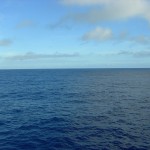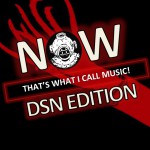
[Note from Craig: The following is by a close friend and colleague, Jeff Nekola. I invited Jeff along for a day out at sea. I thought it would be interesting, and a new perspective, for Jeff to tell you about field work for deep-sea biologist.]
My field time is mostly spent looking at snails living in soil in a wide range of terrestrial habitats. Over the last decade I have conducted field work at over 1100 sites across North America, ranging from the subtropical bay thickets of the Gulf Coast to the taiga of central Quebec across the Midwest to the shores of Hudson’s Bay at Churchill to the alpine tundra of Colorado and the montane forests of the desert Southwest to the coastal scrub and redwood forests of the Big Sur (see Craig’s picture of me hard at work here). But, snails are found across all of the Earth’s major habitat types. So, when Craig offered to let me tag along on one of his deep sea collecting trips, I couldn’t pass up the opportunity.
The cruise I participated in was on Thursday, May 4, 2006 and went to the Mt. Crushmore area in Monterey Canyon. We went to sea on the venerable R/V Point Lobos (affectionately referred to by many at MBARI as the Point Puke, due to the unfortunate side effect of its high center of gravity), and used the ROV Ventana to for field observations.
The dive itself was fairly uneventful. Since the last visit to the site over a decade before, the methane seeps had degraded, and we were unable to find many good examples. There still were a few remnant patches, generally marked by clams in the genus Calyptogena. The presence of abundant dead shells over the site proved it had once been different in the recent past. We were also out hunting for deep sea crabs, and were successful in capturing over a dozen. They are caught by a vacuum tube that latches onto their carapace, and then are dropped into a specimen drawer. As the drawers fill up things get exciting as the ROV operator needs to get the latest individual put away before the others try and make a jail break.
Because Craig plied me with a preventative dose of motion-sickness pills before boarding the Pt. Puke, the lack of dive excitement lead me to nod off during the last stages of the dive. As it turned out, the seas were incredibly calm that day, so I probably didn’t need the pills. I came back with a much better understanding of the limitations faced by all deep sea researchers.
My first impression was about just how long it takes to make any observations in the deep sea. First, it took over two hours to travel the 14 miles to the dive site (yes, I know this is short for deep sea research, where commute time is usually measured in days). Then, there was the 2 hour wait for the ROV to make it to the bottom. During this time, there is nothing much to see on the monitors other than the snowstorm of plankton and other particulate matter. Occasionally, something large will show up: a jellyfish, a squid, perhaps a fish, but generally it’s a monotony of upward-streaming particles. And, once you’re on the bottom, there is a lot more waiting until you run into something interesting as the bottom in most places is pretty much devoid of macroscopic life. Oh, and did I mention that once you’re finished on the bottom that there’s another 2-hour wait to get the ROV back to the surface, and a 2-hour commute home? That’s about 8 hours of commute for 2-3 hours on the bottom.
One way to spend all the downtime on the Point Lobos (like most US science vessels, Craig tells me) is by visiting the incredible selection of snack foods in the galley. I have never in my life seen such a formidable assortment of chips and other snacks. It was as if I had been miraculously transported to Eric Cartmann’s version of heaven. There were mesquite barbecue chips, cheddar sour cream chips, Thai spicy peanut chips, and not the least the Maui sweet onion chips. There were more varieties of cheesy-poofs than I knew existed. If you’re into snack foods, trust me, you need to figure out a way to become a crew member on a deep sea research vessel.
My second was how strange it was to do research remotely in front of a monitor. Granted, I have no desire to experience pressures more than 100 times sea level, and near freezing temperatures, but it was strange to not be able to use my own sensory apparati when collecting data. Added to this was the limited field of vision of the monitors combined with the limited illumination distance (certainly less than 5 meters). The end feeling was one almost of claustrophobia. I kept wondering what was just out of sight, but would never know.






That’s one kickass experience I can only dream of!